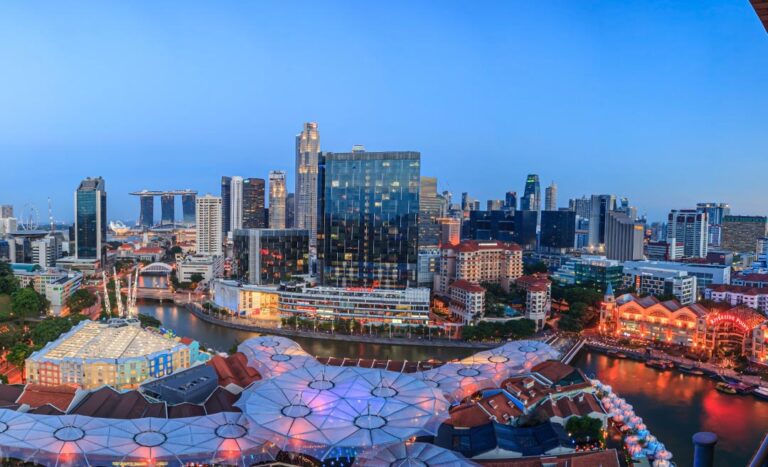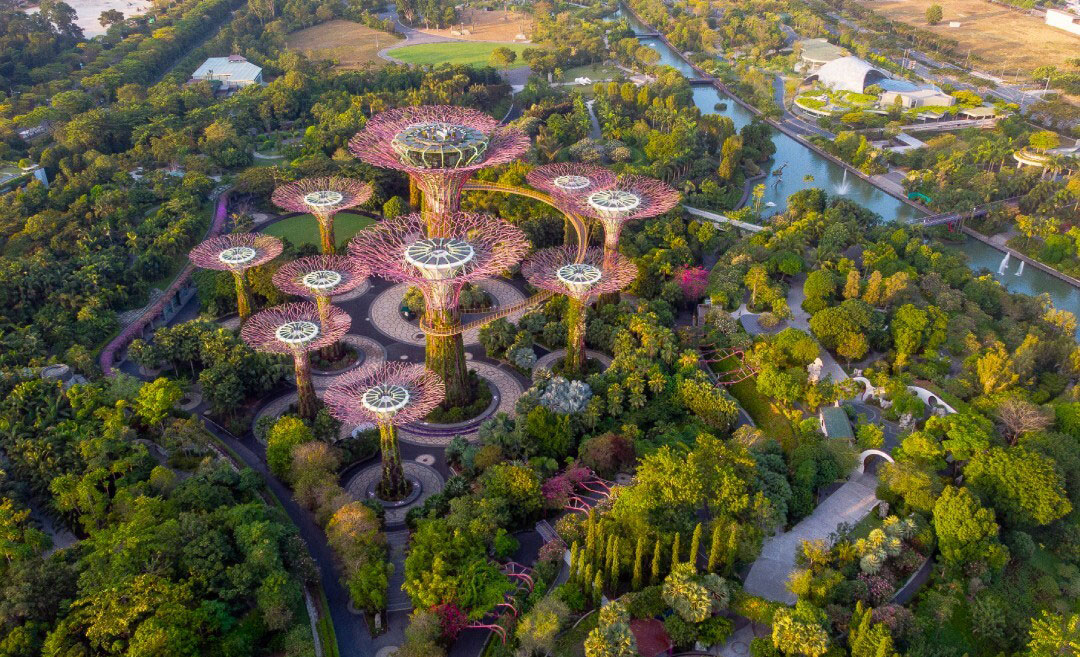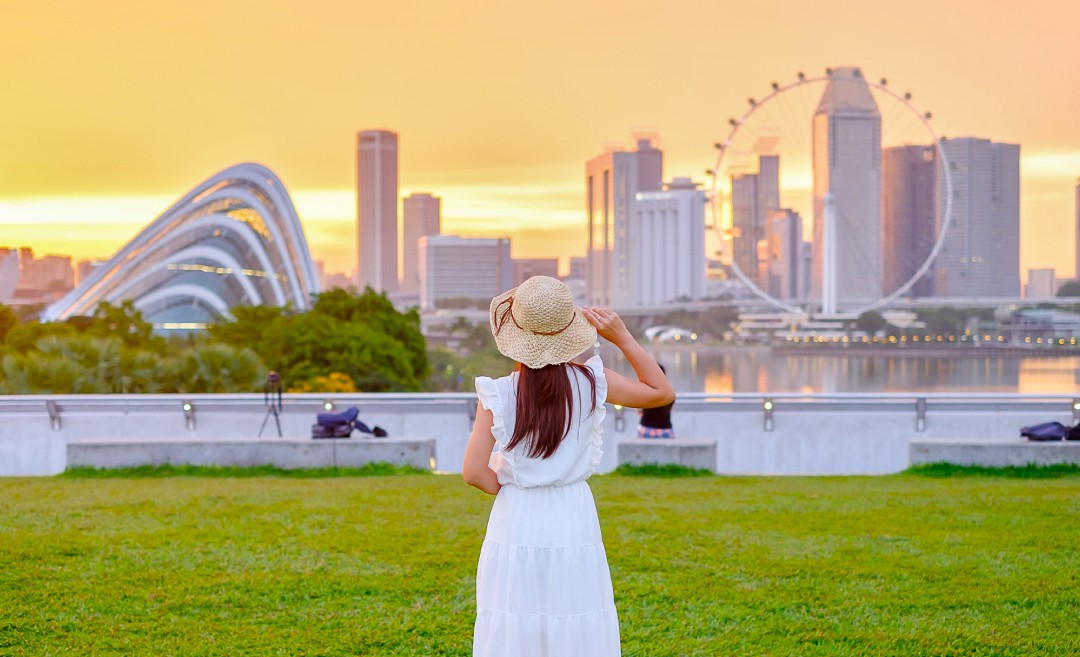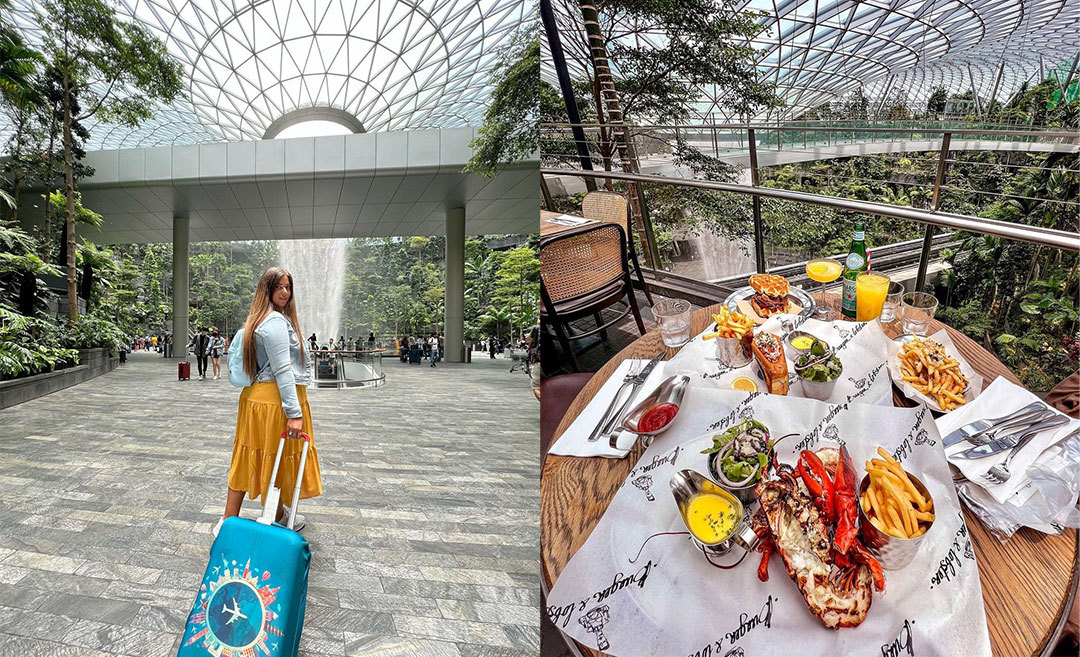Sometimes, in your travels, you see or experience something that spurs you into wanting to know more. Recently, while staying at The Robertson House that fronts the Singapore River near Clarke Quay, it was brought to my attention that in Singapore’s early days, small boats used to unload goods along the riverbanks. I knew of the bar and restaurant scene of nearby Boat Quay and Clarke Quay, but Robertson Quay was new to me.
Beginning my quay exploration at The Robertson House
The hotel incorporates many historic elements and stories, and the club lounge on its tenth floor features a historic map of downtown Singapore. Gazing at the 19th-century, sepia-tone map, I located the river and the area where the hotel now stands and realised that the river had changed dramatically. For example, there was once an island immediately opposite where I now stood. This island was named Pulau Saigon, and it got me thinking: How did it get its name, and what happened to the island?
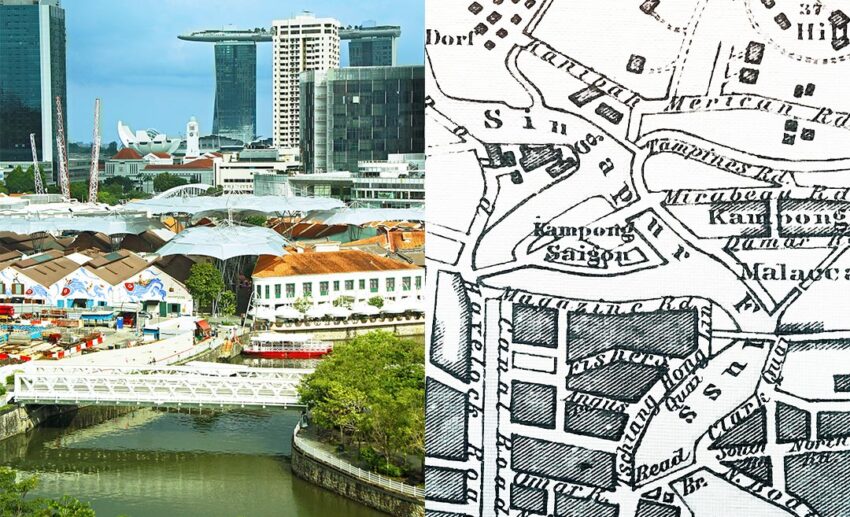
I headed out of the hotel, seeking answers while wandering along the Singapore River and past its iconic quays. My path was lined with lush greenery and well-formed paths, and I was impressed with the number of people running or cycling along the tracks. Look closely, and you might even see wildlife such as otters, lizards, and birds. The area is also within walking distance of the expansive and historic Fort Canning Park.
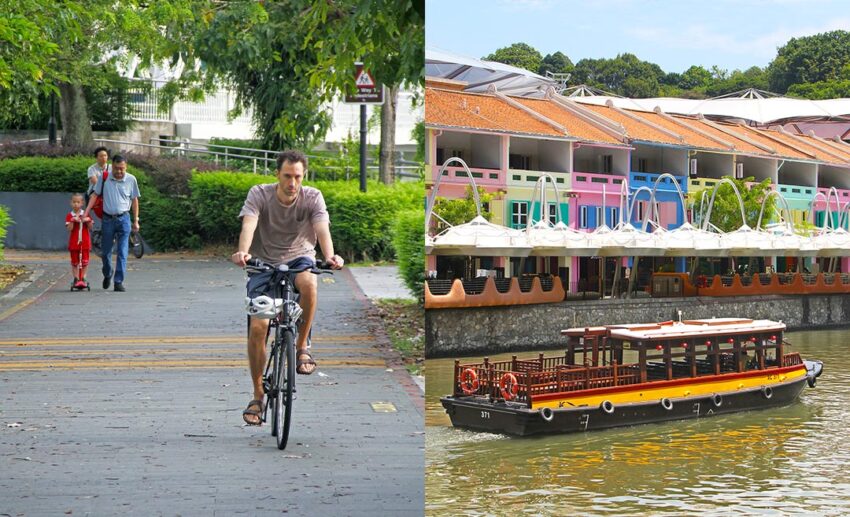
The riverside quays, once an important hub for trade and transportation, still attract visitors who want to explore the river on one of the many boats that operate from here.
Historic setting: Pulau Saigon
In Singapore’s early days, it’s more than likely that people from all over the region ended up there, so it’s possible that some Vietnamese settled here. One reference suggested several warehouses with the name ‘Saigon’ on them. It has been put forward that trade between Singapore and Saigon (originally part of Cochin China) dates back to the 1820s. By the 1860s, imports such as rice from Saigon were significant. However, historians suggest it’s unlikely that a large community from Saigon ever lived in Singapore.

Robertson Quay was once a bustling quay when Singapore was a lively entrepôt servicing the Asian spice trade. Godowns (warehouses) once lined the riverbanks where goods were stored after being offloaded from ships moored off Singapore.

My research suggested that Kampong Saigon included the island and the land on the northern side of the river where The Robertson House now stands.

Pulau Saigon previously housed industries and warehouses storing rice, charcoal, timber, and tiles. In 1907, the railway linking Singapore to Malaya was extended across Pulau Saigon. Few people lived here, and between the 1970s and late 1980s, the island became part of the river’s south bank. Now, nothing remains of the island, with River Place Condominium occupying the former island that is within walking distance of Quayside Place.

Quayside wandering
The quays are now an important part of Singapore’s night-time entertainment scene. During the day, you may wonder what all the fuss is about as it is near-deserted, but things pick up around 5pm with happy-hour priced drinks pulling in the crowds. While no longer Singapore’s liveliest evening scene, it is still popular, especially with visitors staying in the riverside hotels.

Clarke Quay’s entertainment precinct is divided by the river, with bars such as Harry’s, Highlander, and Cuba Libre on the northern side, and on the southern side, Riverside Point is home to establishments like Brewerkz, Café Iguana, and Jumbo Seafood.
Continue walking along the river, and you end up at Boat Quay on the southern side of the river. Here, the repurposed low-rise warehouses are mostly bars and restaurants that come to life at dusk.

My advice is to start at the top of Circular Road along Boat Quay and head down the riverside street seeking out bars or restaurants such as 1826, Charlie’s, Eat Sum Thing, Harry’s (similar to the one on Clarke Quay), JU95, Lady Wu, Molly Malone’s, or Skinny’s Lounge.

A historic retreat
After exploring the quays, it was wonderful to return to The Robertson House to relax in its 1823 Reading Room. The hotel’s club lounge is an exclusive retreat with a curated library of vintage travel and history books. Guests are encouraged to read the newer titles and exchange them for their own finished books. Located on the hotel’s top floor, the lounge has some excellent city skyline and river views.

The Robertson House honours Dr. J. Murray Robertson and Singapore’s quayside colonial heritage with narratives weaved into its design. Many of these nuances are evident in the black-and-white detailing in the rooms, suites, and common areas. Entrepôt, the hotel’s restaurant, serves an enticing selection of Anglo-Asian cuisine with an emphasis on classical Singaporean dishes artfully presented with a contemporary twist.
Discounted social hour drinks (4pm to 7pm) are offered here each evening, including Dr Robertson’s Lager, specially brewed for the hotel, Dr Robertson’s Gin, specially distilled for the hotel, cocktails, and wines. Drinks and snacks are also served beside the pool. An intimate, concealed bar, Chandu, is hidden away at the rear of the property. Its opium den ambience offers a historic setting and glamorous cocktails for a select few patrons. History suggests that opium was consumed in Singapore’s early days.

When the Marina Barrage was constructed near Gardens by the Bay, the river was dammed, and it effectively became a lake, although even the locals probably don’t realise that.
Getting there
Robertson Quay is located just a short walk from Fort Canning MRT, while Clarke Quay MRT is closer to Clarke Quay and Boat Quay.

